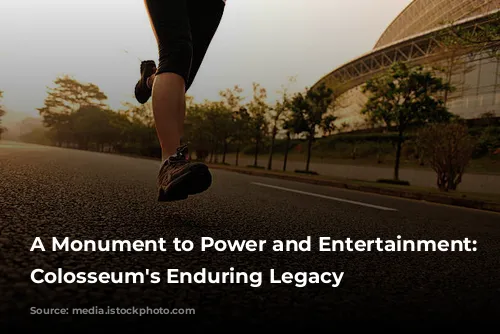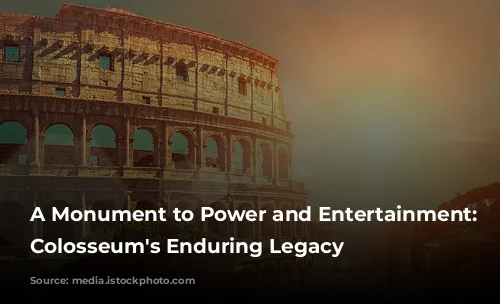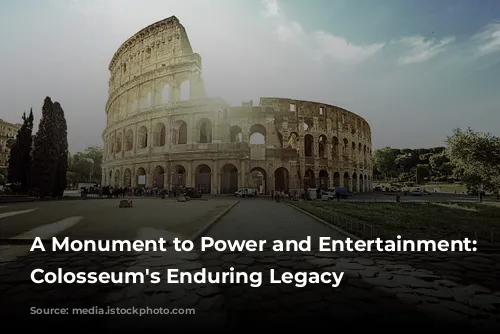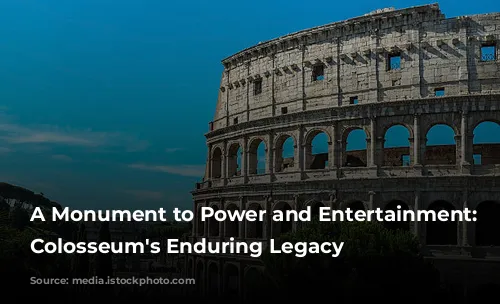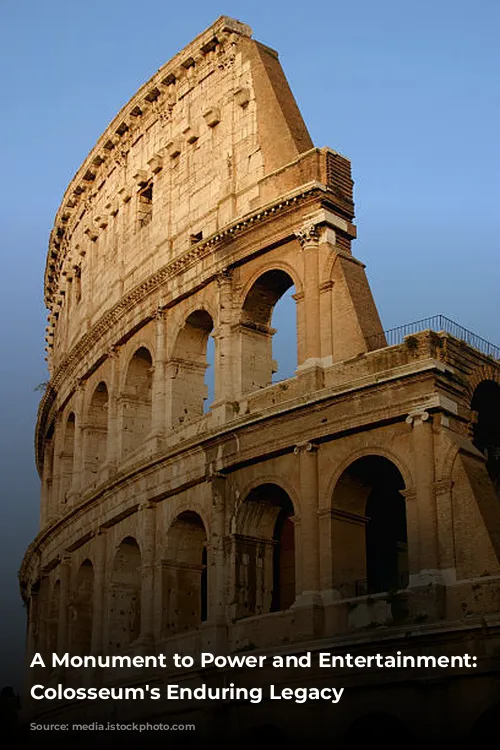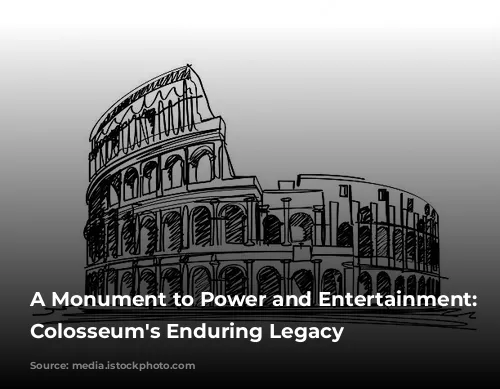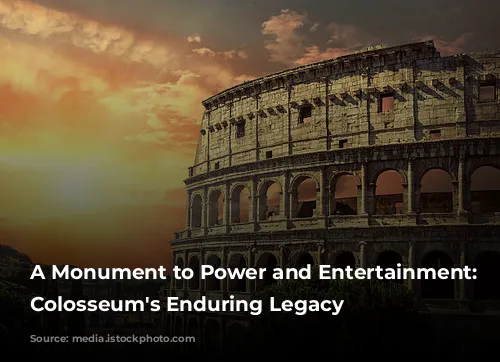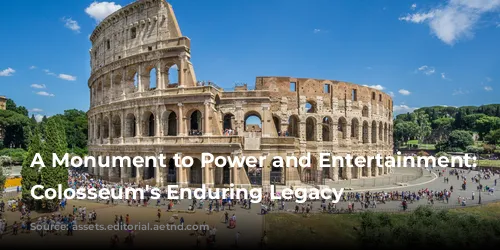The Colosseum, also known as the Flavian Amphitheater, is a magnificent architectural masterpiece that stands as a testament to the grandeur of ancient Rome. While commonly remembered for its brutal gladiatorial contests and animal hunts, the Colosseum represents far more than just a site of blood-sport entertainment. It serves as a powerful symbol of the Flavian Dynasty’s influence and a remarkable feat of engineering and design.
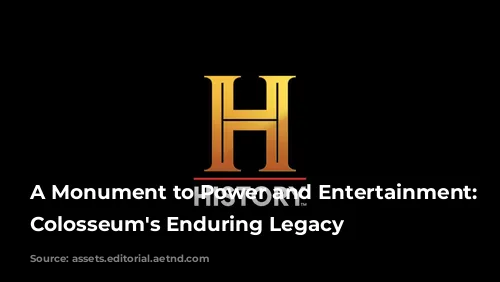
A Monument to the Flavian Dynasty’s Rise to Power
The Colosseum’s construction was a direct consequence of the Flavian Dynasty’s ambition to restore Rome’s glory following a period of turmoil and devastation. After Vespasian, a general, ascended to the throne in 69 A.D., he and his sons Titus and Domitian, embarked on a massive program to rebuild the city. This ambitious endeavor encompassed renovating buildings, statues, and monuments throughout Rome, demonstrating their commitment to revitalizing the city’s splendor.
The Colosseum’s construction, initiated in 70 A.D. by Vespasian, symbolized the Flavian Dynasty’s political power. Its funding derived from the spoils captured during the siege of Jerusalem, highlighting the dynasty’s military prowess. The Colosseum’s dedication ten years later marked a dramatic resurgence for the city, showcasing the Flavian Dynasty’s dominance and their commitment to the Roman people.
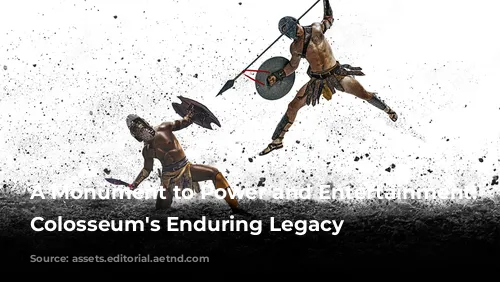
A Masterpiece of Engineering and Design
The Colosseum’s construction was a testament to the ingenuity and innovation of Roman engineering. It was the largest and most complex permanent amphitheater of its time, surpassing all previous structures in scale and complexity. Built primarily from concrete, travertine, marble, stone, and timber, the Colosseum soared to an impressive height of 157 feet, equivalent to a modern 15-story building. Its immense capacity, estimated to be between 50,000 and 80,000 people, reflects the Colosseum’s ability to host massive gatherings, showcasing its architectural prowess.
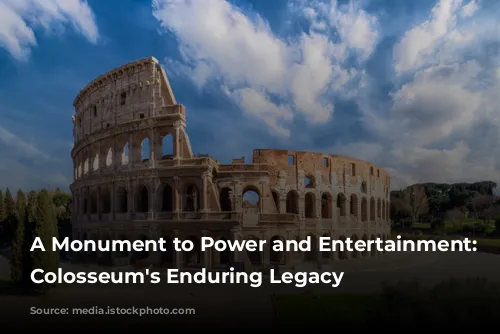
A Reflection of Roman Social Hierarchy
The Flavian Dynasty strategically positioned the Colosseum on the site of Nero’s Domus Aurea, a luxurious estate that symbolized Nero’s extravagance. By replacing the estate with the Colosseum, the Flavians aimed to erase Nero’s legacy and establish their own dominance. The Colosseum’s construction reinforced the rigid social hierarchy of Roman society. While Nero’s estate was accessible to all, the Flavians ensured that the Colosseum provided public enjoyment while upholding social order through its hierarchical seating arrangement.
The Colosseum’s seating reflected the strict social hierarchy of ancient Rome. The best seats, closest to the arena, were reserved for the Emperor and the elite senatorial class. Above them, the Equestrian order, consisting of wealthy merchants, artisans, and bureaucrats, occupied their designated sections. The remaining 95 percent of the Roman population, including women, foreigners, and the poor, occupied the less desirable upper seats.
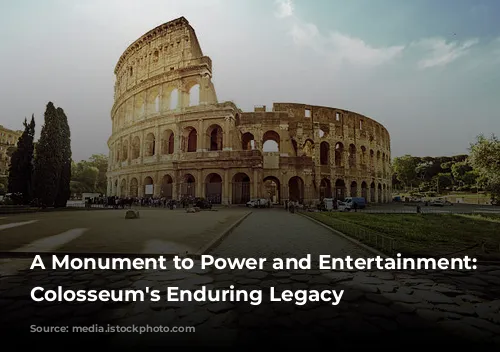
A Monument of Innovation and Functionality
The Colosseum’s design incorporated a sophisticated system of entrances, corridors, and seating arrangements to facilitate the orderly flow of spectators. Separate entrances for political and religious leaders and 76 for ordinary citizens ensured a smooth entry and exit process, while corridors kept social groups distinct, preventing mingling between different social classes.
Despite its hierarchical seating arrangement, the Colosseum’s elliptical architecture ensured visibility to the action in the arena for every spectator, regardless of their social status. The Colosseum’s innovative design also included a sophisticated drainage system to manage water used for mock sea battles, an overhead retractable awning to shield spectators from the elements, and a complex network of chambers and tunnels beneath the arena floor called the hypogeum, which housed props, scenery, and participants.
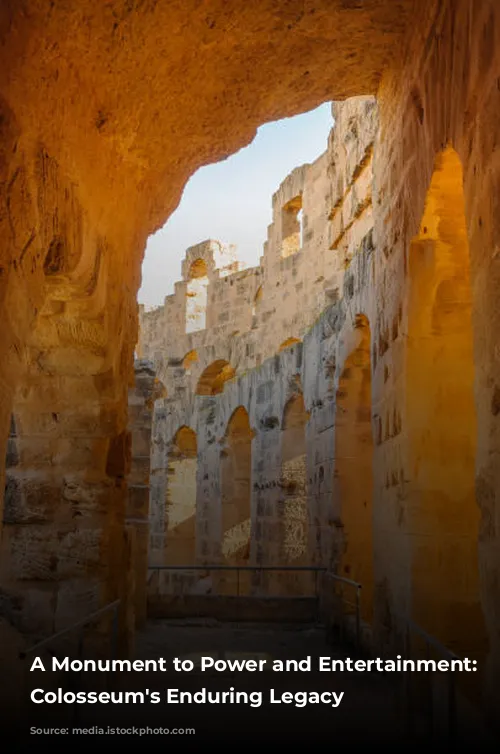
The Colosseum’s Construction: Labor and Finance
While the precise cost of building the Colosseum remains unknown, historians believe that a significant portion of the funding came from the spoils of war, particularly the loot captured during the Roman siege of Jerusalem. An inscription on the Colosseum itself states that the emperor Titus, the son of Vespasian, ordered the construction of the amphitheater using funds from the sale of war booty.
The labor force used to build the Colosseum has been the subject of much debate. While some believe that 100,000 Jewish slaves captured during the siege of Jerusalem were forced to work on the Colosseum, this claim is largely unsubstantiated. While a significant number of slaves were likely employed, their origins remain uncertain.
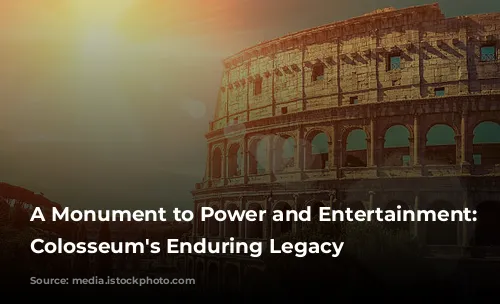
The Enduring Legacy of the Colosseum
The Colosseum’s architectural innovations and its enduring presence have shaped modern sports stadiums. Its use of arches for structural support, its elliptical shape, and its system of organizing spectators based on their seating location have become staples of modern stadium design. The Colosseum’s influence extends beyond architecture, serving as a powerful reminder of ancient Rome’s cultural and social complexities, a testament to its engineering prowess, and a symbol of its imperial power.
The Colosseum stands as a magnificent monument that embodies the grandeur and complexity of ancient Rome. It is a testament to the Flavian Dynasty’s ambition, a symbol of Roman engineering ingenuity, and a reflection of the city’s social hierarchy. Its enduring legacy continues to inspire architects, engineers, and historians, reminding us of the power and creativity of a bygone era.
